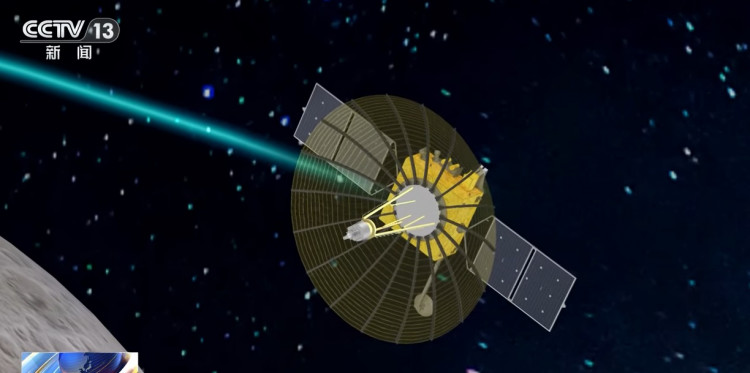China has taken a significant step forward in its long-term lunar exploration program with the successful launch of the Queqiao-2 satellite on Wednesday. The 1.2-metric ton spacecraft, named after a mythological bridge made of magpies, will serve as a crucial communications link between ground operations on Earth and upcoming missions to the far side of the moon.
Launched atop a Long March 8 rocket from the southern island province of Hainan, Queqiao-2 is accompanied by two miniature satellites, Tiandu-1 and -2. The relay satellite will orbit the moon and facilitate data transfers between Earth and the Chang'e-6 mission, set to launch in May. Chang'e-6, a robotic mission, aims to retrieve samples from an ancient basin on the moon's hidden side, marking the first time lunar material will be acquired from this unexplored region.
The necessity for a relay satellite arises from the fact that the moon's near side always faces Earth, making direct communication with the far side impossible due to the lack of a direct line of sight. Queqiao-2 will bridge this gap, enabling the exchange of data and commands between mission control and the spacecraft operating on the moon's hidden face.
In addition to supporting the Chang'e-6 mission, Queqiao-2 will also serve as a relay platform for the Chang'e-7 lunar mission in 2026 and the Chang'e-8 mission in 2028. By 2040, the satellite is expected to be part of a constellation of relay satellites acting as a communications bridge for crewed lunar missions and exploration of other planets, such as Mars and Venus.
The Queqiao-2 satellite is designed to operate for at least eight years, allowing it to support lunar missions beyond 2030, when China plans to land its first astronauts on the moon. The spacecraft will enter a highly elliptical orbit, reaching an altitude of 8,600 km above the lunar surface at its highest point and enabling a communication link between Earth and the moon for more than eight hours. For the remainder of its roughly 12-hour orbit, Queqiao-2 will descend to as low as 300 km above the moon's surface.
Queqiao-2 will take over from its predecessor, Queqiao-1, launched in 2018. Queqiao-1, despite its designed lifespan of five years, continues to operate in an orbit approximately 70,000 km beyond the moon. It played a vital role in supporting the Chang'e-4 mission, which achieved the first-ever soft landing on the far side of the moon in 2019 and successfully delivered the Yutu-2 robotic rover to the surface.
The Tiandu-1 and -2 miniature satellites, launched alongside Queqiao-2, will conduct tests for the construction of a constellation that will provide communications, navigation, and remote sensing support for China's planned research station at the moon's south pole.
With the launch of Queqiao-2, China joins a select group of countries, including the United States, India, and Japan, that have deployed orbiters to support lunar exploration. The satellite's extended lifespan and unique orbit will be crucial in enabling China's ambitious plans for crewed lunar missions and the establishment of a research outpost on the moon's surface.






